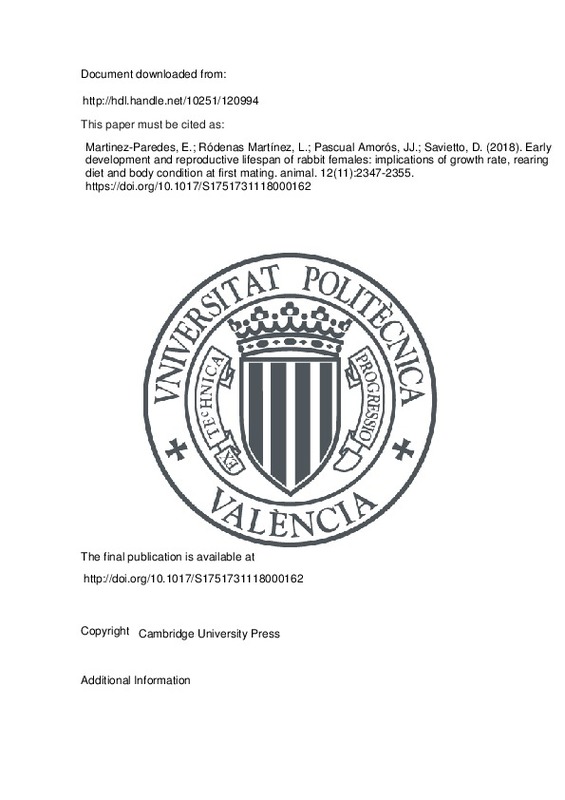JavaScript is disabled for your browser. Some features of this site may not work without it.
Buscar en RiuNet
Listar
Mi cuenta
Estadísticas
Ayuda RiuNet
Admin. UPV
Early development and reproductive lifespan of rabbit females: implications of growth rate, rearing diet and body condition at first mating
Mostrar el registro completo del ítem
Martinez-Paredes, E.; Ródenas Martínez, L.; Pascual Amorós, JJ.; Savietto, D. (2018). Early development and reproductive lifespan of rabbit females: implications of growth rate, rearing diet and body condition at first mating. animal. 12(11):2347-2355. https://doi.org/10.1017/S1751731118000162
Por favor, use este identificador para citar o enlazar este ítem: http://hdl.handle.net/10251/120994
Ficheros en el ítem
Metadatos del ítem
| Título: | Early development and reproductive lifespan of rabbit females: implications of growth rate, rearing diet and body condition at first mating | |
| Autor: | Savietto, Davi | |
| Entidad UPV: |
|
|
| Fecha difusión: |
|
|
| Resumen: |
[EN] Factors influencing early development such as birth weight, nest competition, and the diet received during rearing have been proposed as elements conditioning the future reproductive performance of European rabbit ...[+]
|
|
| Palabras clave: |
|
|
| Derechos de uso: | Reserva de todos los derechos | |
| Fuente: |
|
|
| DOI: |
|
|
| Editorial: |
|
|
| Versión del editor: | http://doi.org/10.1017/S1751731118000162 | |
| Código del Proyecto: |
|
|
| Agradecimientos: |
The authors acknowledge Cesar Villalba (Fabara, Spain), Luis Eroles (Valderrobres, Spain) for the technical support in managing the animals and for kindly providing a space to conduct our study. They also thank the Commission ...[+]
|
|
| Tipo: |
|







![[Cerrado]](/themes/UPV/images/candado.png)


